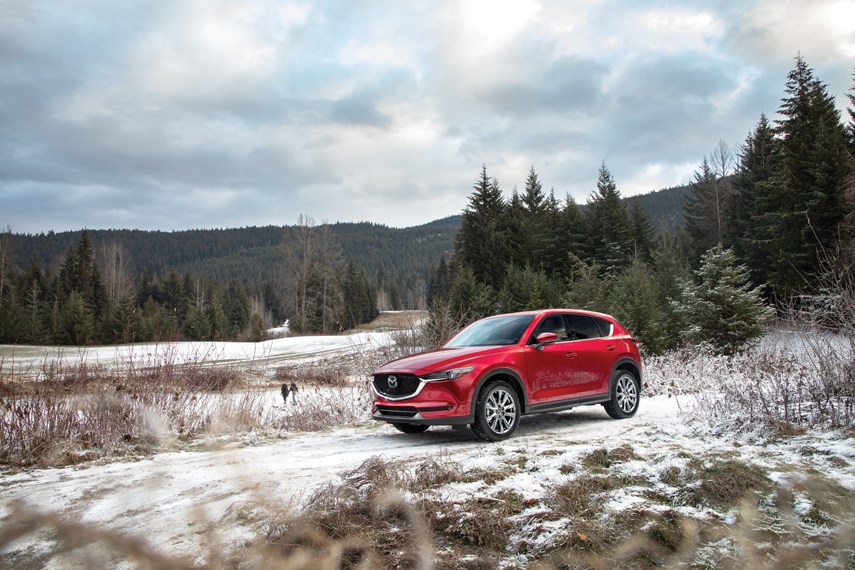When first I reviewed the Mazda CX-5 several years ago, I enjoyed the proportions, the handling, and the overall driver-centric feel of the vehicle.
The one fly in the ointment, I noted, was the 2.0-litre engine, which was efficient, but a little lacking in power.
Not long afterwards, Mazda themselves seemed to reach the same conclusion, and fitted a more-powerful 2.5-litre engine in all but the most basic CX-5s. So-equipped, Mazda’s family-friendly crossover was now up to the task of keeping up with highway traffic.
However, those of us on the North Shore who live with short on-ramps were still left wanting. Ditto those families who like to take road trips into the mountains: when you’ve got a short passing section to get around the slow-moving RV that’s been clogging the view for the last 20 minutes, you want a little extra scoot under your foot.
Well here it is, the third engine option from Mazda, now equipped with turbocharged power. Let’s find out if this last evolution is the best yet, or whether things were perfectly fine as they were.
Design
Somewhere along the line, Mazda went from purely an engineering firm to a company that prioritized design. You can see its best work in the Mazda6 and new Mazda3, but the CX-5 has also benefitted from the company’s efforts.
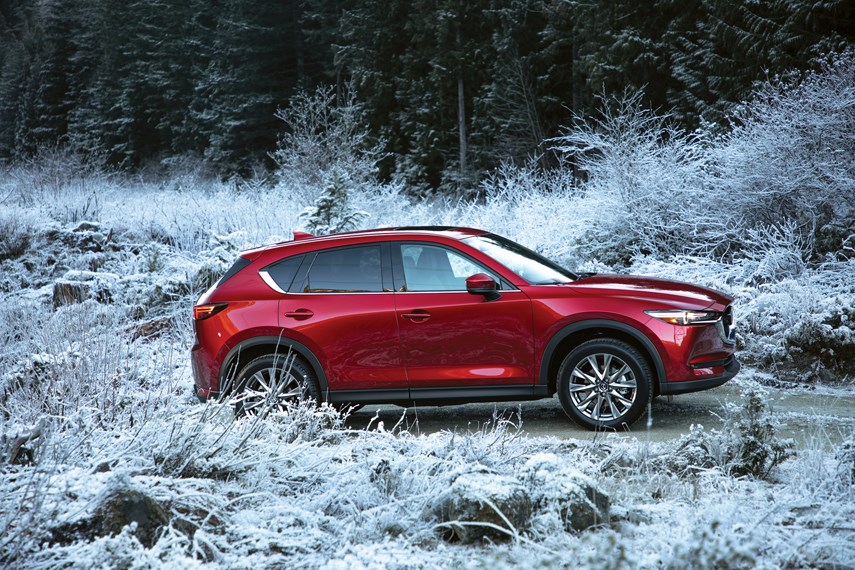
The large shield-shaped grille is as dominantly positioned as anything else on the market, but doesn’t look overly aggressive. Tying in the low-profile headlights makes the CX-5 look sleek, not angry, and the similarly slim LED tallights out back also look modern and elegant.
The rest of the CX-5 hasn’t been fiddled with too much, but it already had a handsome profile, presenting an uncluttered and urban-friendly shape. Note the lack of roof rails, however, as Mazda has opted for a sleek look rather than a utilitarian one (they’re an optional accessory).
Since we’re focusing in on the turbocharged variants, both the GT and Signature level CX-5s come with 19-inch wheels. Smaller-diameter alloys will fit when you’re picking out a set of winter tires and wheels for the ski season.
Environment
For the most part, the CX-5 keeps its cabin layout conventional, with a large 875-litre trunk, roomy back seats, and a dashboard arranged around a touchscreen that projects from the dash. But wait, that’s not just a touchscreen.
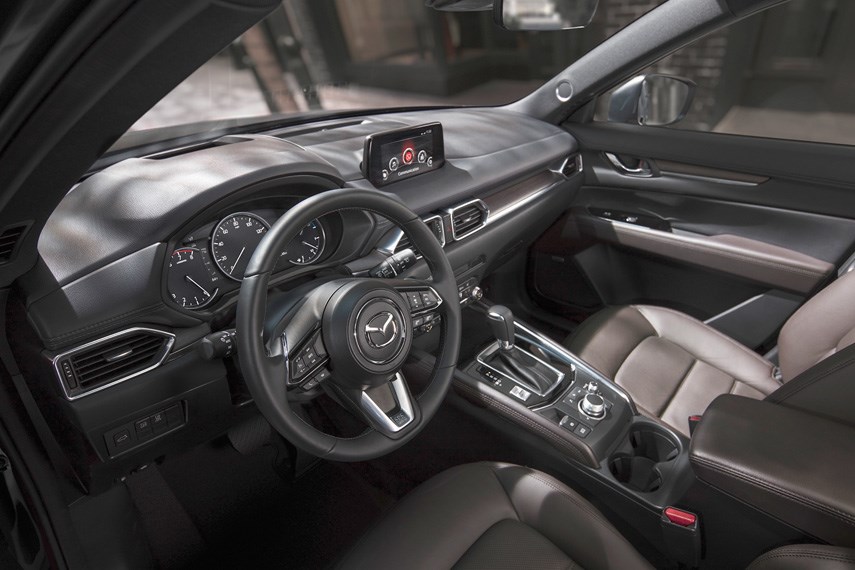
While almost every other manufacturer is turning to large, capacitive screens that match the way we use our phones, Mazda offers a simplified manual control in the form of a rotary knob and a handful of buttons.
The system looks a little dated, but it’s very intuitive, and doesn’t distract driver attention from the road. The high-mounted, low-profile screen requires the briefest of glances, and there’s a heads-up display for speed and other information.
The seats are comfortable and both heated and ventilated, there’s a heated steering wheel, and the automatic climate control works well. However, the overall impression of the CX-5 is that everything’s been designed around the driver, y’know, actually doing some driving.
Performance
The CX-5’s new engine is an option on the GT range, and standard on the fancy-pants signature model. It produces 250 horsepower when run on premium fuel, or 227 h.p. when using regular fuel, which is perfectly safe to use. Peak torque is 310 foot-pounds, no matter which grade of fuel used.
It’s that last bit that’s the important part. Mazda’s long produced diesel engine options for the European market, and they understand the appeal of torque. You want your MX-5 to be a high-revving machine that has you grinning as you zing it up the rev-counter. For your daily-driver crossover, you want something that can match speed with that gap in traffic right now.
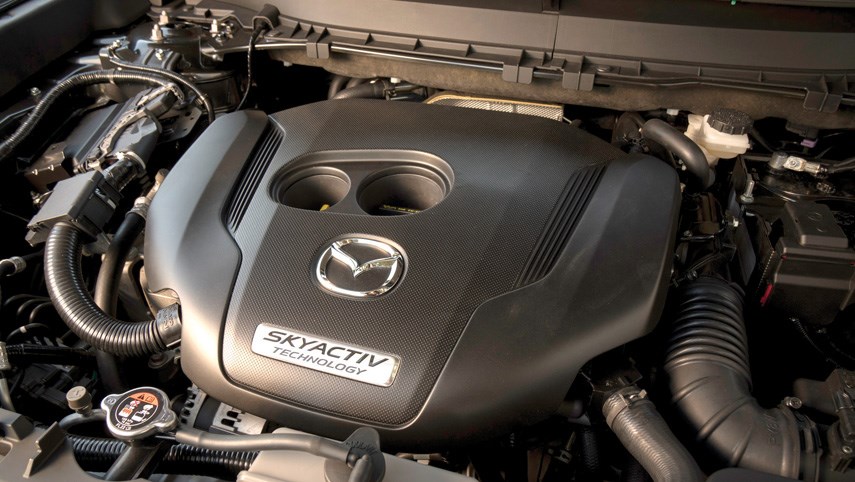
With the faintest whistle of turbocharger boost, that’s just what the CX-5 now does. The six-speed automatic tends to shift up a little earlier than you’d expect, but that’s simply due to the excellent reserves of low-end power. Now, instead of having to wind things out a little, there’s instant punch under your right foot.
And the CX-5 still handles far more sweetly than you’d expect. It’s fun to drive on twisty roads at sensible speeds, and would make for a great road-trip machine.
Further, Mazda’s also upgraded the CX-5 recently with their new brake-based torque-vectoring system that improves corner exit. Out in the recent snowy conditions on the hills, the CX-5’s all-wheel-drive system provided confident grip that feels improved over the first generations of this vehicle.
So there you have it, grip when it’s slippery out, a bit of enjoyment to be had behind the wheel, and the get-up-and-go to get you out on the roads. As the mainstream crossovers pull back on power a little, Mazda’s gamble makes the CX-5 look like a bit of a premium option. It certainly feels that way.
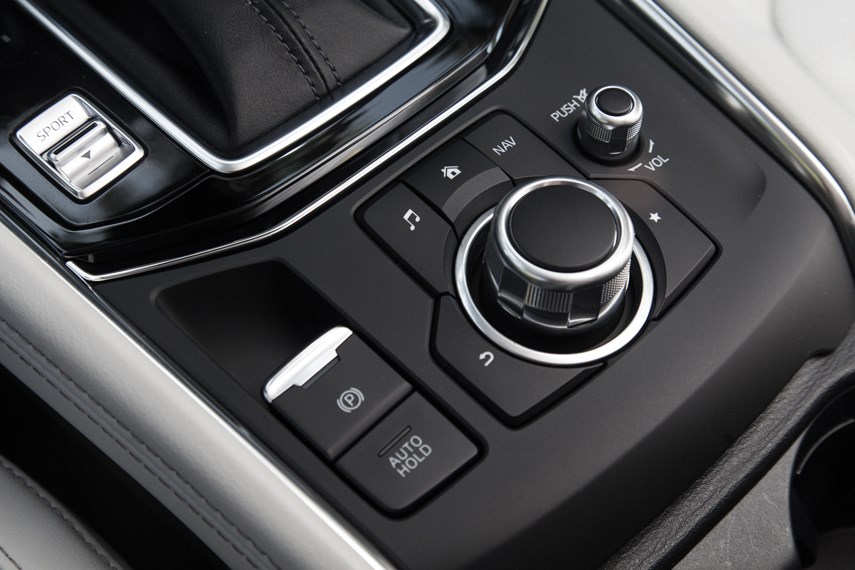
Features
The standard GT costs $37,450, with the optional turbocharged engine adding $2,000 to the price. Otherwise options are few, as the GT is already very well equipped with leather, satellite navigation, and five years of free satellite traffic information.
The Signature edition is worth consideration too, despite being fairly pricey at $40,950. Upgrades here consist mostly of interior cosmetics, but the genuine wood and overall nicer interior will likely have lasting value.
Fuel economy figures aren’t much of a penalty over the naturally aspirated four-cylinder, at 10.8 litres/100 kilometres in the city, and 8.8 l/100 km on the highway. Like most Mazda products, the CX-5 does a good job of delivering real-world economy that matches the suggested figures.
Green light
Solid low-end power; smooth ride; sweet handling; very practical.
Stop sign
Can get pricey; needs a few more interior cubbies, infotainment is getting dated.
The checkered flag
Plenty of practicality and fun, now equipped with a turbocharger. What’s not to like?
Competitor
Subaru Forester ($27,995)
All-new for this model year, the Forester comes to us in one specification only, a 2.5-litre boxer four-cylinder engine, and a continuously variable transmission. No more turbo.
That’s a shame for Canadian buyers, as the turbocharged Forester XT made up 15 per cent of all Forester sales. Still, the new one feels quick enough, and the new chassis is a huge improvement in handling. It’s also still as utilitarian as ever, just as you’d expect from Subaru.
This matchup of the two niche players might let Mazda steal away a few Forester buyers who can’t yet give up that love of boost.
mcaleeronwheels@gmail.com
